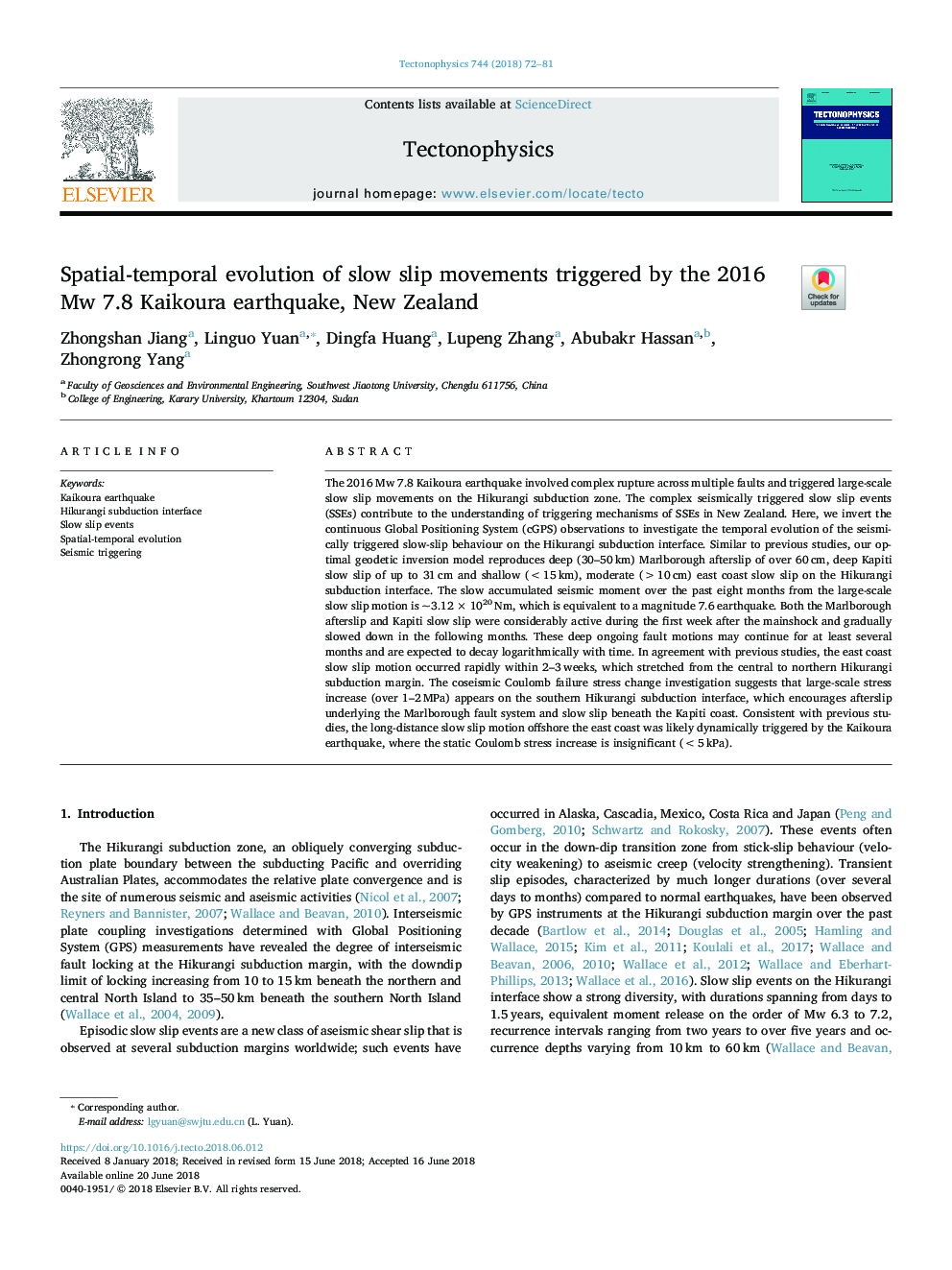| کد مقاله | کد نشریه | سال انتشار | مقاله انگلیسی | نسخه تمام متن |
|---|---|---|---|---|
| 8908600 | 1636672 | 2018 | 10 صفحه PDF | دانلود رایگان |
عنوان انگلیسی مقاله ISI
Spatial-temporal evolution of slow slip movements triggered by the 2016 Mw 7.8 Kaikoura earthquake, New Zealand
دانلود مقاله + سفارش ترجمه
دانلود مقاله ISI انگلیسی
رایگان برای ایرانیان
موضوعات مرتبط
مهندسی و علوم پایه
علوم زمین و سیارات
فرآیندهای سطح زمین
پیش نمایش صفحه اول مقاله

چکیده انگلیسی
The 2016 Mw 7.8 Kaikoura earthquake involved complex rupture across multiple faults and triggered large-scale slow slip movements on the Hikurangi subduction zone. The complex seismically triggered slow slip events (SSEs) contribute to the understanding of triggering mechanisms of SSEs in New Zealand. Here, we invert the continuous Global Positioning System (cGPS) observations to investigate the temporal evolution of the seismically triggered slow-slip behaviour on the Hikurangi subduction interface. Similar to previous studies, our optimal geodetic inversion model reproduces deep (30-50â¯km) Marlborough afterslip of over 60â¯cm, deep Kapiti slow slip of up to 31â¯cm and shallow (<15â¯km), moderate (>10â¯cm) east coast slow slip on the Hikurangi subduction interface. The slow accumulated seismic moment over the past eight months from the large-scale slow slip motion is ~3.12â¯Ãâ¯1020â¯Nm, which is equivalent to a magnitude 7.6 earthquake. Both the Marlborough afterslip and Kapiti slow slip were considerably active during the first week after the mainshock and gradually slowed down in the following months. These deep ongoing fault motions may continue for at least several months and are expected to decay logarithmically with time. In agreement with previous studies, the east coast slow slip motion occurred rapidly within 2-3â¯weeks, which stretched from the central to northern Hikurangi subduction margin. The coseismic Coulomb failure stress change investigation suggests that large-scale stress increase (over 1-2â¯MPa) appears on the southern Hikurangi subduction interface, which encourages afterslip underlying the Marlborough fault system and slow slip beneath the Kapiti coast. Consistent with previous studies, the long-distance slow slip motion offshore the east coast was likely dynamically triggered by the Kaikoura earthquake, where the static Coulomb stress increase is insignificant (<5â¯kPa).
ناشر
Database: Elsevier - ScienceDirect (ساینس دایرکت)
Journal: Tectonophysics - Volume 744, 2 October 2018, Pages 72-81
Journal: Tectonophysics - Volume 744, 2 October 2018, Pages 72-81
نویسندگان
Zhongshan Jiang, Linguo Yuan, Dingfa Huang, Lupeng Zhang, Abubakr Hassan, Zhongrong Yang,